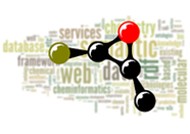
Article processing charges for this Thematic Series have been partially funded by Pfizer, Inc. Pfizer, Inc. has had no input into the content of the publication or the articles themselves. All articles in the series have been independently prepared by the authors and have been subject to the journal's standard peer review process.
Editors: Dr Martin Paul Braendle, Dr Egon Willighagen



